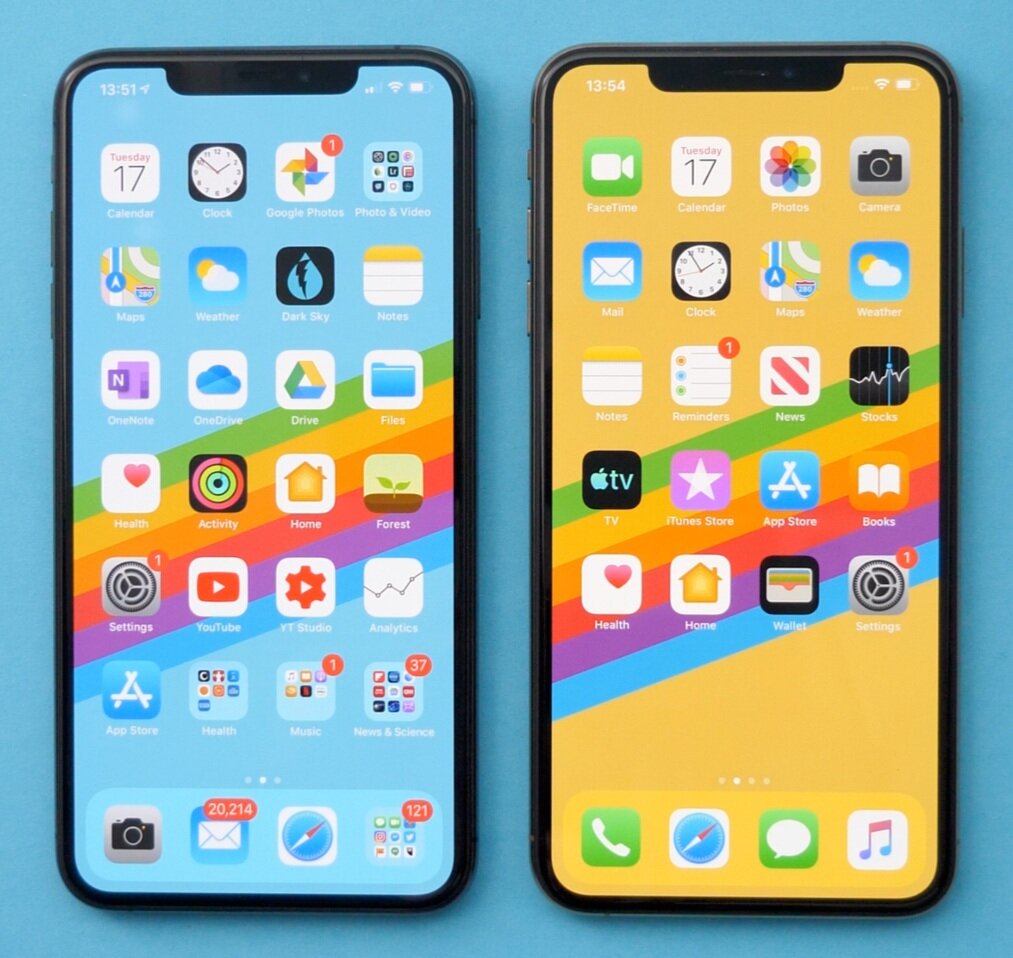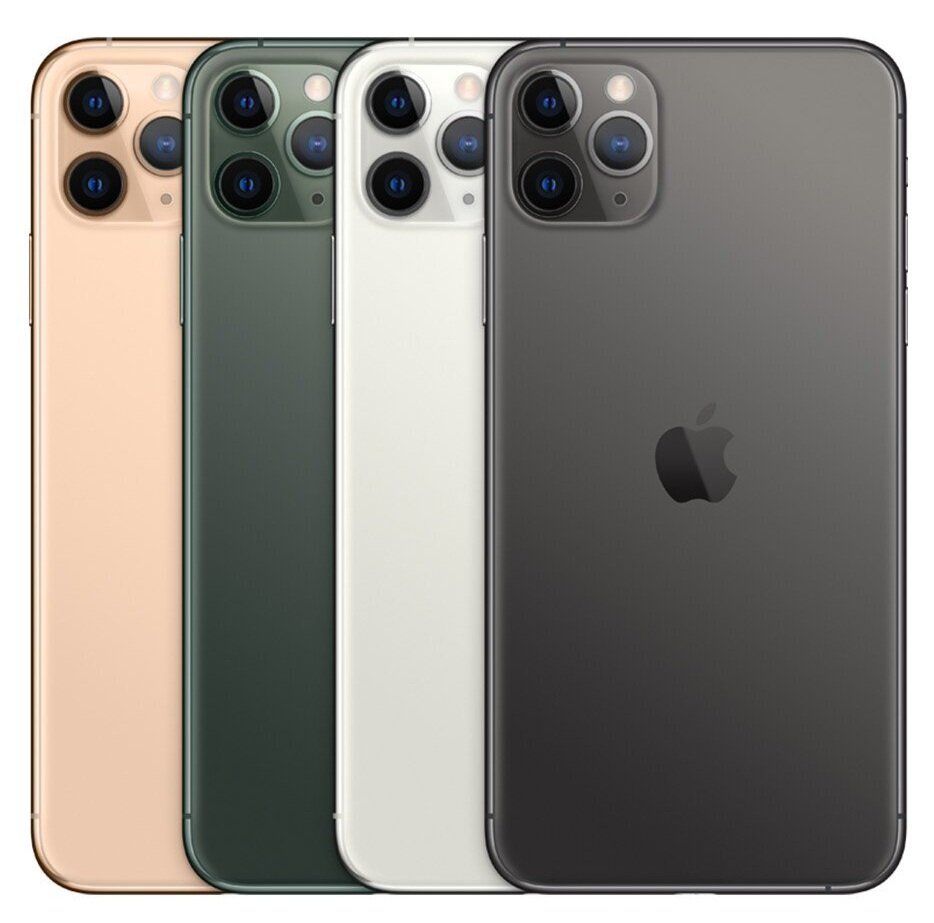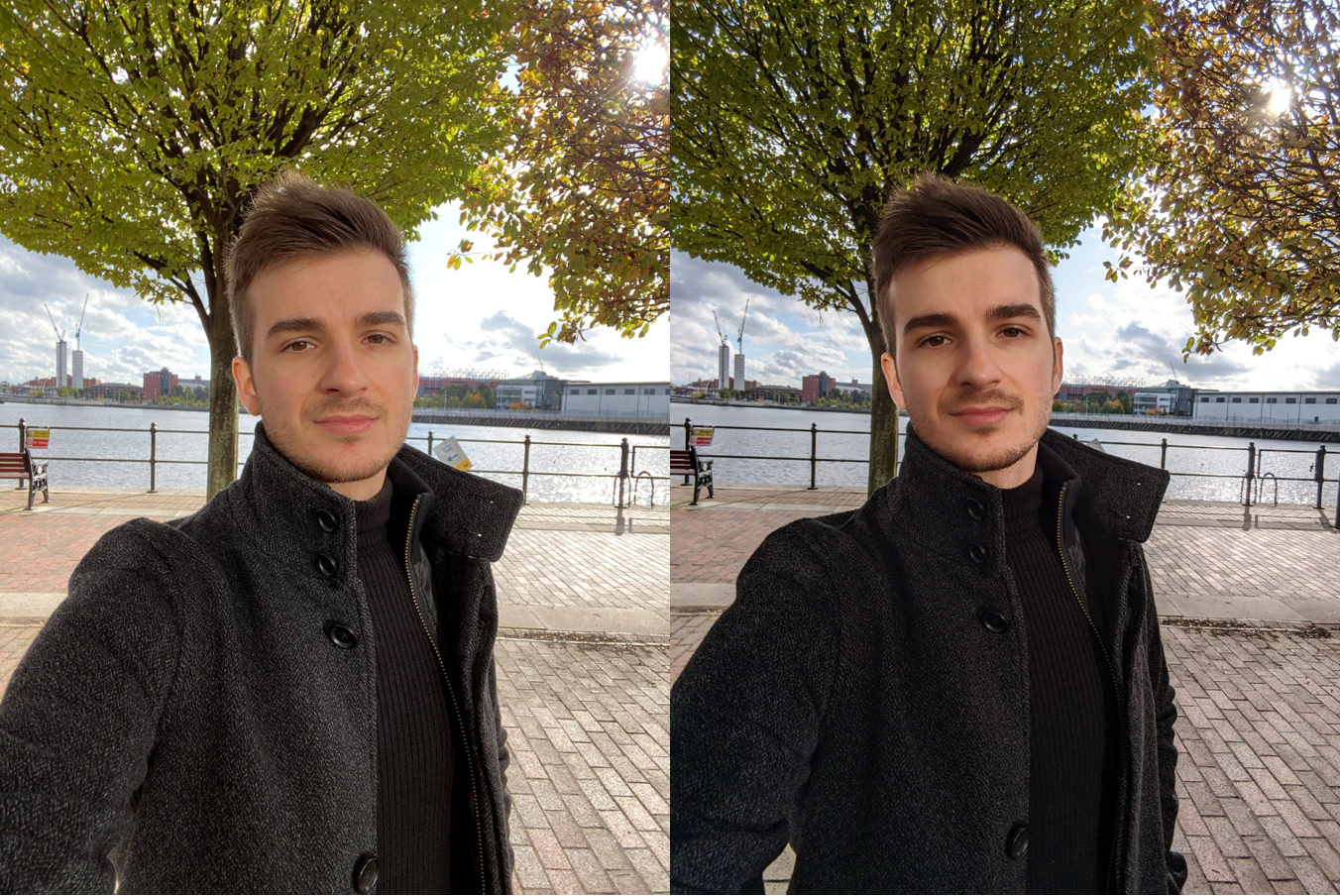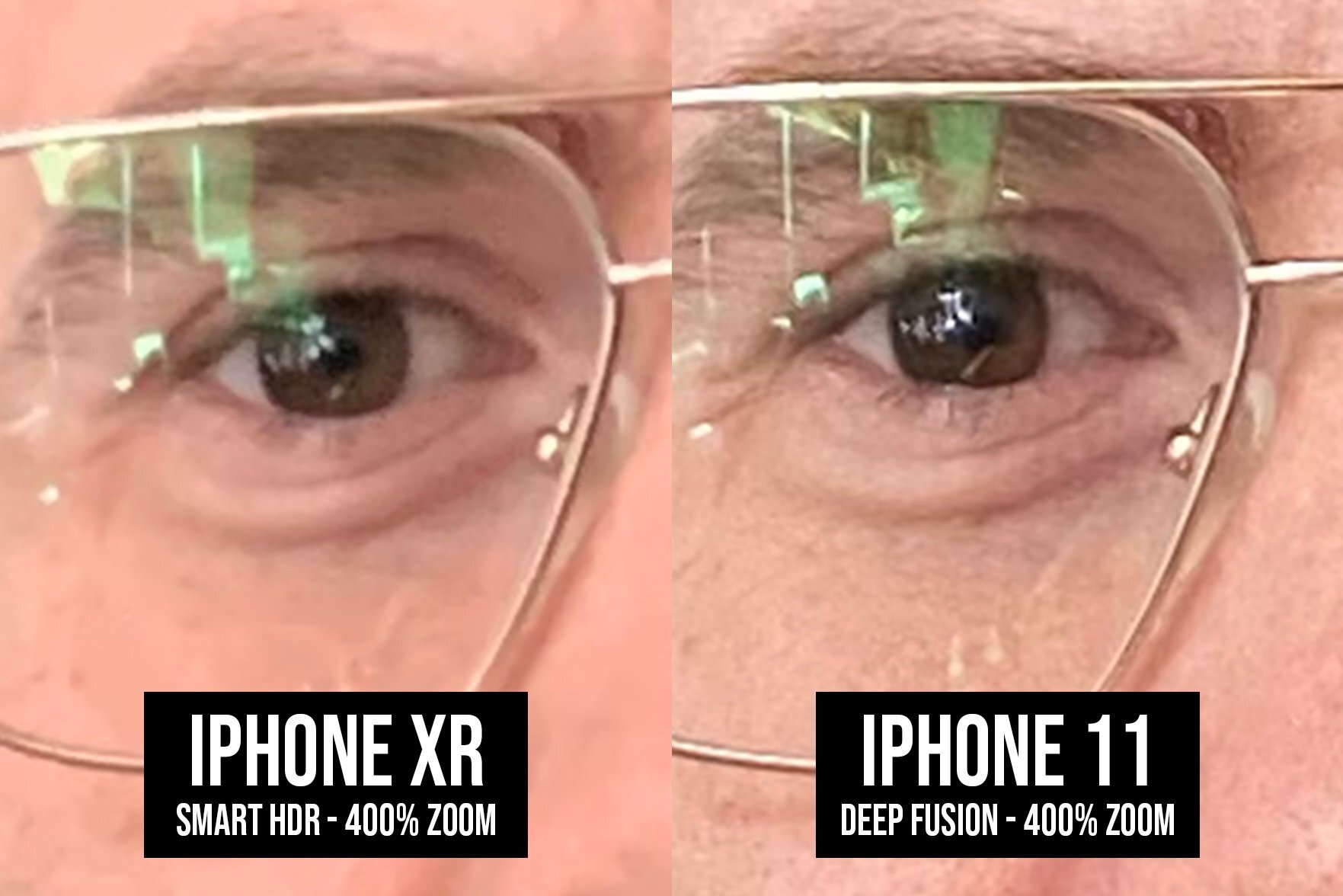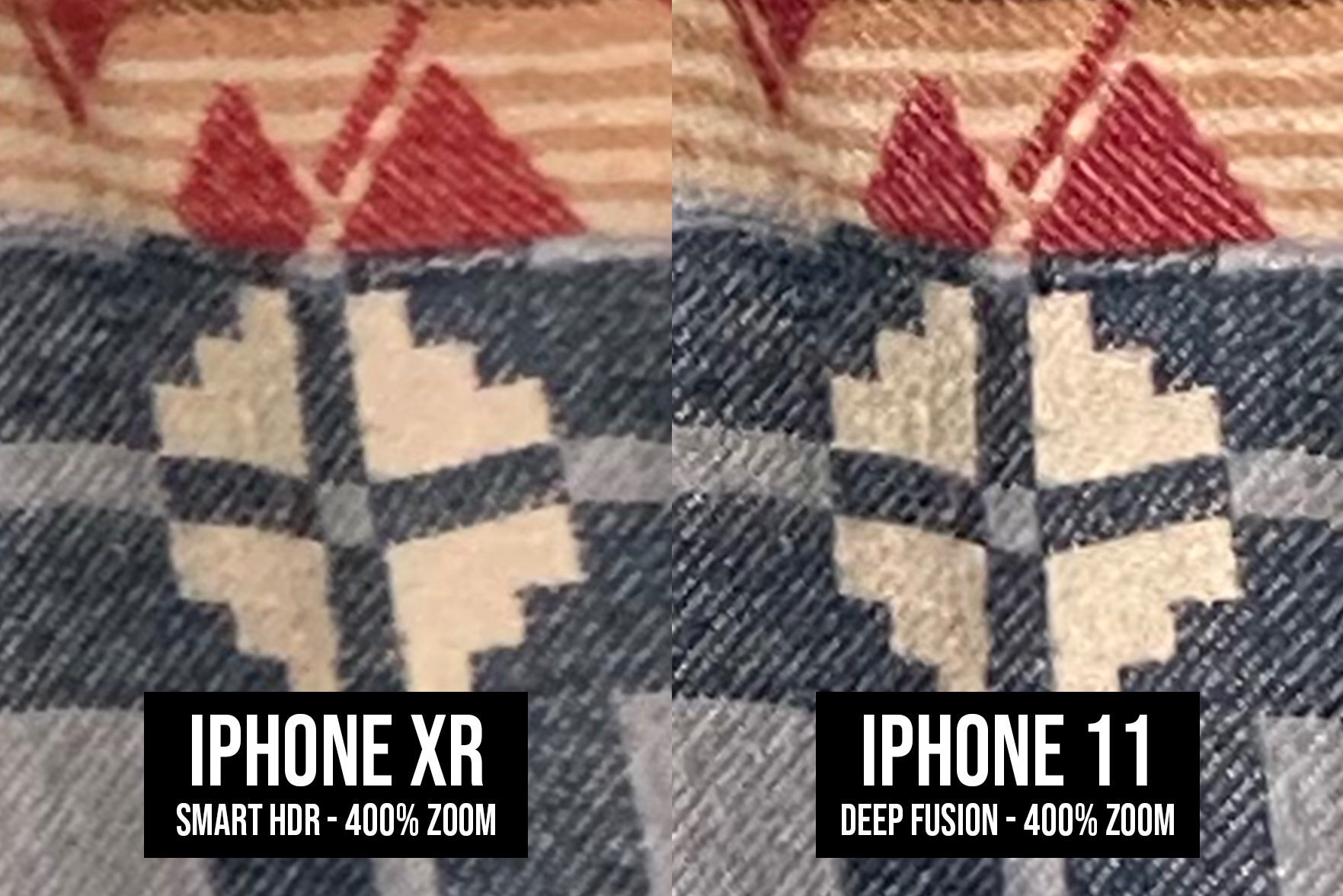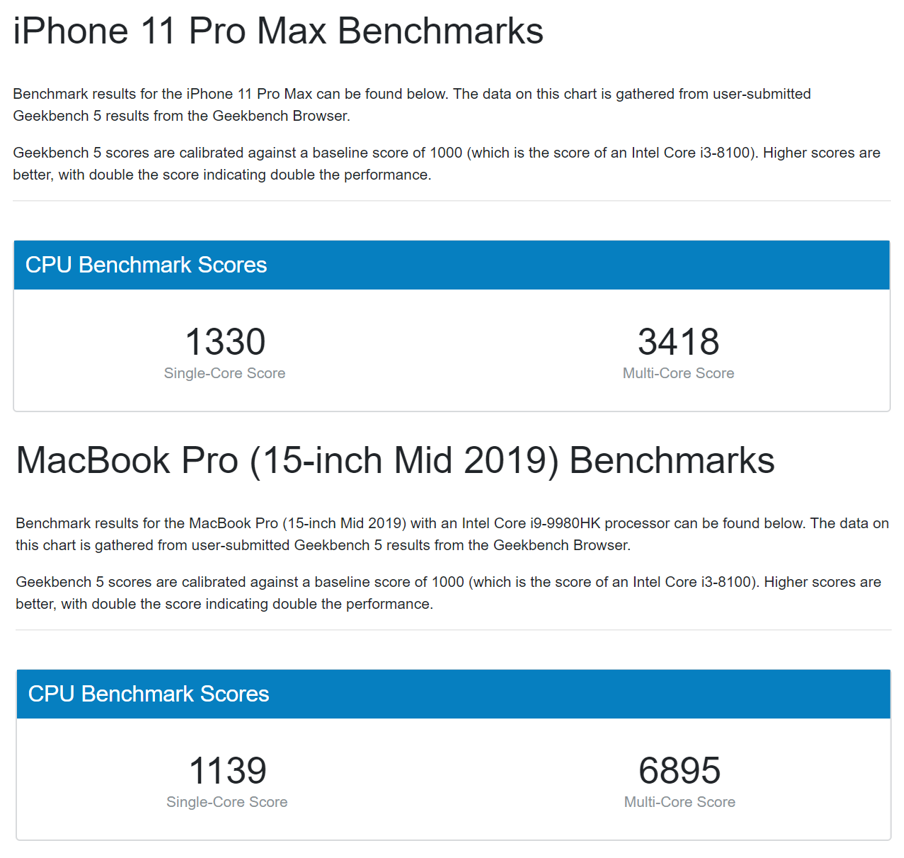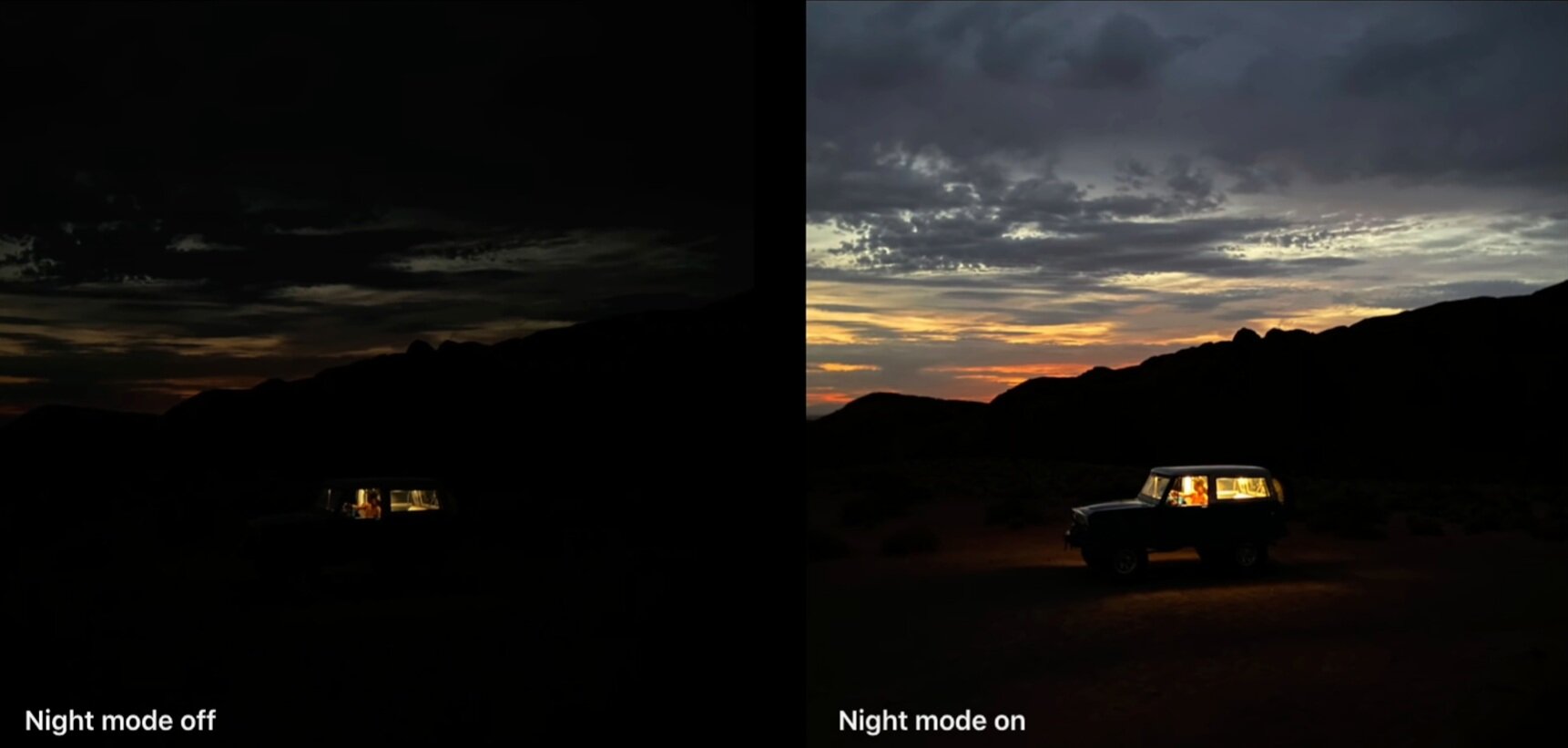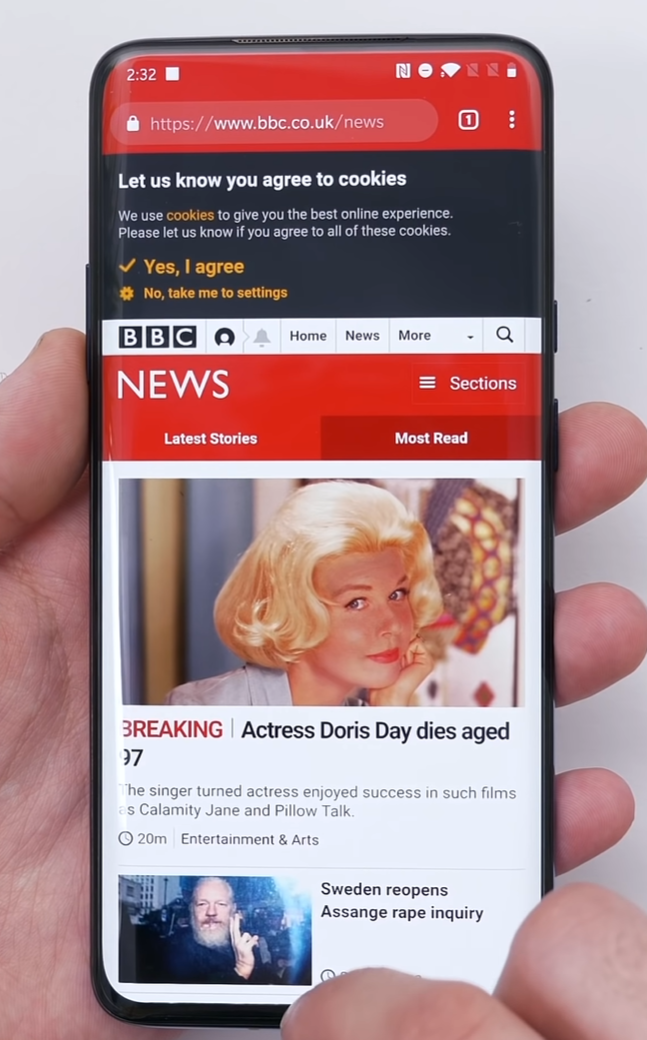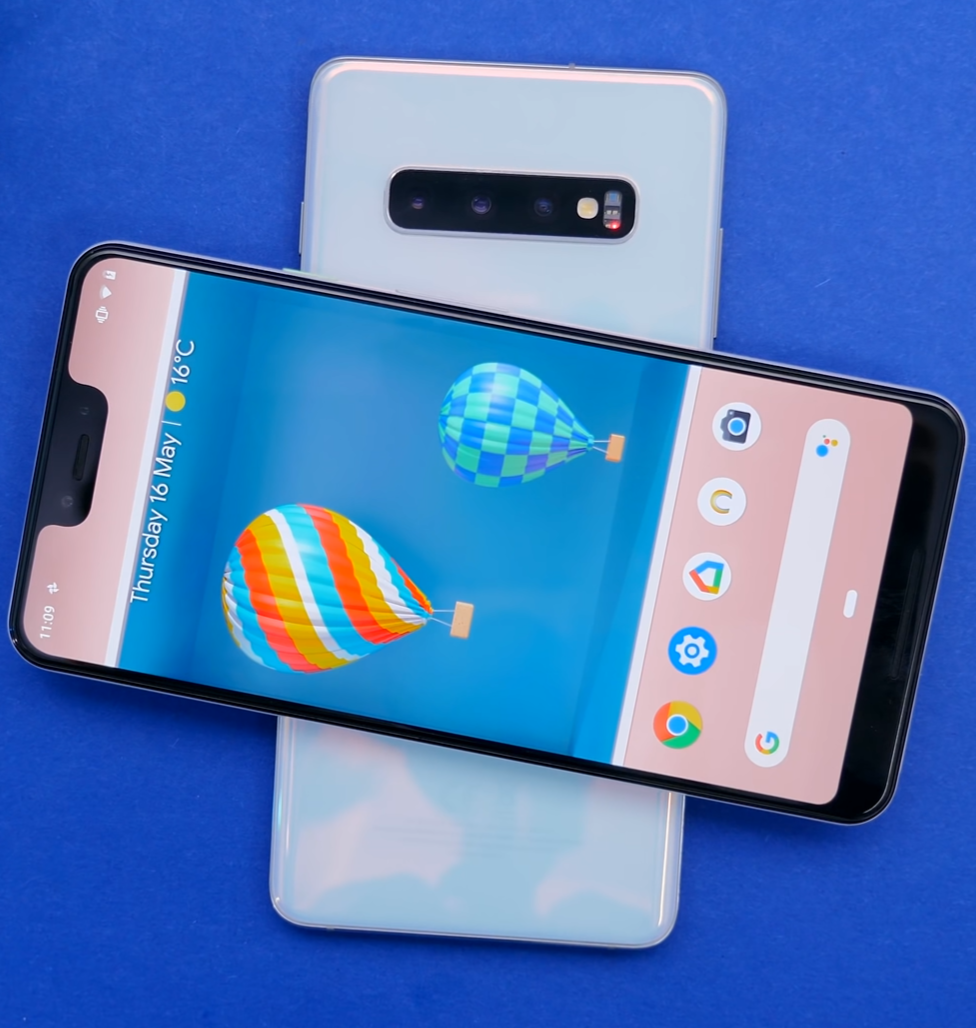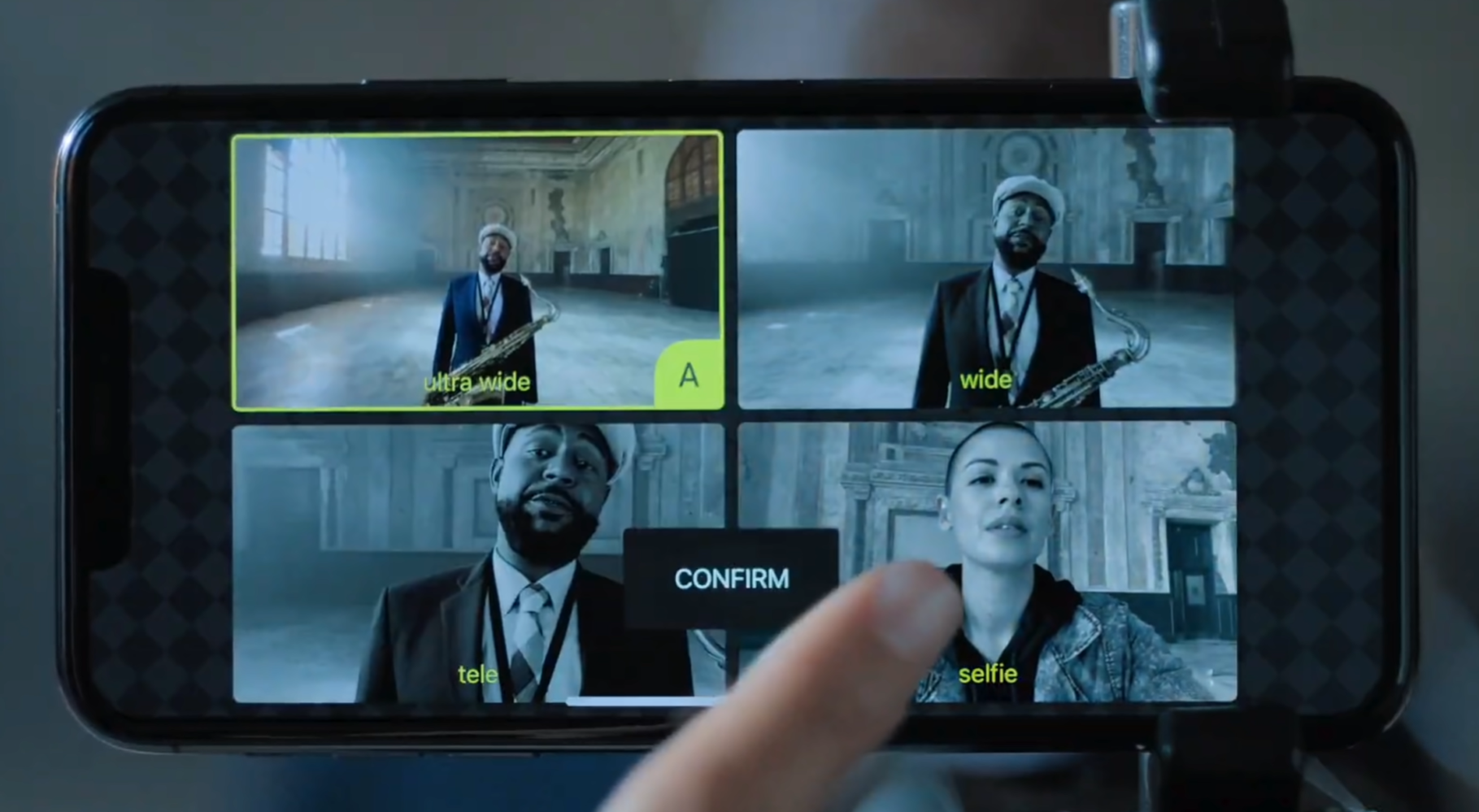This is the iPhone 11 Pro Max, definitely not the best name for a phone. Apple should’ve really called this the iPhone Pro, which would then come in two sizes, 5.8” and 6.5”, so that they have the same naming scheme on the iPhone as they do on the iPad and MacBooks. We don’t have a MacBook Pro 5 Max or iPad Pro 3 Max on those so why do we have iPhone 11 Pro Max?
But leaving the bad naming scheme aside, this is by far the best iPhone Apple has ever released, like it should be because it’s the newest one, but actually this one fixes all the major issues that the iPhones have had for years, and I’m pretty impressed!
I’ve been using this as my daily driver since it came out in mid-September, and this is my full in-depth review of the iPhone 11 Pro Max, covering my final thoughts on the Design, Display, Camera, Performance, Special Features, Battery & Value!
DESIGN
A design front on design comparison between the iPhone 11 Pro Max (Left) and XS Max (Right)
Starting off with the Design, from the front, the iPhone 11 Pro Max looks very disappointing. It’s got the exact same design as the iPhone XS Max from 2018, which is the same design as the iPhone X from 2017. That means we still have that massive notch, which does have some high end tech inside for mapping your Face in 3D and unlocking the phone, so there is an actual reason why it is this big.
But when you compare it to the Note 10’s design, the Samsung Galaxy S10’s or especially the OnePlus 7 Pro and the 7T Pro, both of which have no notch and no camera cutout at all, you can probably see where I’m going with this. The iPhone 11 Pro Max just has a very boring look to it, that will in fact change next year luckily, but until then we’re stuck with this two year old design until late 2020.
However, there are a few things that have changed design wise. The back now has that famous triple lens camera module which I’ll get into more detail in the camera section of this article. But Apple has also changed the back glass now. It is now a frosted glass rather than the traditional glass back that we had on the XS, which means that it won’t leave any fingerprints, and it’s also much smoother to the touch so your finger glides much easier, whereas before you would have a tiny bit of resistance. So this does make the iPhone 11 Pro Max the best feeling iPhone that I have held in my hands, but at the same time it also makes it the slipperiest.
Luckily, Apple did say that they’ve added the most durable glass in smartphone into this, which is very likely a slightly modified version of Gorilla Glass 6. And there have been quite a few drop tests done by other tech outlets and channels and long story short, it’s still glass so it will break. It’s just that it won’t break as easily as the previous iPhones did. But you see, the way glass works is that if you want it to be more durable to drops, you need to add more plastic into it to make it more flexible, which also decreases the scratch resistance. So I don’t know if you’ve seen my twitter post, which I’ll link here, but I actually managed to get my iPhone 11 Pro Max scratched very heavily, and I ended up having that replaced because of it.
Now, there are a few more design changes that Apple has made, such as moving the Apple Logo towards the middle now, which I do believe looks better now than ever before. We also have no more iPhone branding on the back, and no regulatory information either, unless you have the European model which still has those unfortunately. But other than that, you get an extremely clean look on the back. Now something that I do like is that the inside of the camera module now matches the colour of the iPhone, unlike the mock-ups that we had, where it was entirely black so I do think that it looks better this way. Something else that I like about this is that Apple has actually made the inside of the camera module glossy, while on the regular iPhone 11, we have the exact opposite, a glossy back and a frosted glass camera module.
Also the iPhone 11 Pro & Pro Max are still one of the only ones on the market that come with a stainless steel frame. All the other ones come with either an aluminium, magnesium, or polished aluminium frame in the case of the Galaxy Note 10+ for example.
A slight design change with this years models is thickness. At 8.1mm thick, these iPhones are one of the thickest flagships on the market right now. The regular iPhone 11 is a bit thicker at 8.3mm, but aside from that the only iPhone thicker than those is the iPhone 4 from 2010. Ever since then, Apple kept making their iPhones thinner and thinner to the point where batteries also had to be made thinner, and the battery life ended up being affected. But in the more recent years, Apple has decided to do quite the opposite. Make their iPhones thicker and thicker every single year and also extend the battery life as a result. I’ll talk more about the battery life once we get to the battery section of this article, but when it comes to how the 11 Pro Max feels in the hand, the moment I got it, I could definitely tell that it was bulkier than my XS Max, was which was already bulkier than my X was, and so on. It’s not a fat phone by any means but it does give you that solid feel in the hand when you hold it, because of its thickness and that premium stainless steel frame.
The colours of the iPhone 11 Pro Max
Now, the final design change when it comes to these new iPhones are the colours. We get four colours this year; the regular Space Grey, Silver, Gold, and now we also get a brand new Midnight Green colour. The Space Grey has a very clean and matte black look now which I absolutely love! The silver now has a frosted white look, where the Apple logo is barely visible at all, and if I’m being honest there’s something about the White model that kind of makes me regret going for the Space Grey for my personal one. The Midnight Green one looked good but extremely similar to the Space Grey one, aside from the stainless steel frame which was indeed dark green. The gold one looks ok, but I do think that the previous gold XS looked much better.
DISPLAY
Moving on to the Display, we have the same 5.8” and 6.5” sizes as last year with a resolution of 2688x1242 on the 11 Pro Max and 2436x1125 on the 11 Pro, and both at 458PPI.
Apple has this weird thing where they adjust the resolution in order to keep the same PPI number. They do this so that they can keep the app scaling consistent across their devices and to make it easier for developers to optimise their apps.
We still have the True Tone Display from the years before but we no longer have 3D Touch. Apple added 3D touch with the iPhone 6S and it let you have a secondary tap, a right click so to say, when you applied pressure to certain elements of the UI. The problem with 3D touch was that it wasn’t clear which elements supported 3D touch and it also increased the thickness of the device by quite a bit, space which they could’ve been used for stuff like a larger battery. So instead of 3D touch, you now have to hold for longer and then you get a vibration to let you know that it worked. This means that with the new iPhones and iOS13 you have to do a long hold on the apps and then you get the 3D touch options, and then if you hold for longer they will wiggle and then you can move them around. Previously this was pressure based and I honestly prefer it this way. Before, if I just wanted to arrange the apps I had to press soft enough for the icons to jiggle, since if I pressed harder, 3D touch would activate and I had to repeat the process until I got the icons to jiggle.
A brightness comparison between the iPhone 11 Pro Max (Top) and XS Max (Bottom)
Now, when it comes to the actual display quality Apple has actually made some improvements. We now have what they’re calling the Super Retina XDR display, again another horrible overly complicated name. Essentially this phone has a Samsung panel and it’s Samsung newest generation of AMOLED displays. Part of the same generation that they’re using in the S10 and the Note 10 from a few months ago. This means that when compared to the XS Max from last year, the display can get up to 1200 nits when playing back HDR content compared to around 1000 nits. When you use it outdoors, it can now go up to 800 nits from 625, so it’s easier to view when outdoors. I also found this display to actually be brighter than the Note 10’s in both outdoor and manual brightness.
We’ve actually bought a professional display colour calibration tool and here are the results that we got out of the 11 Pro Max’s display. So on a white surface with a maxed out manual brightness, we got 524 nits, while on the exact same image the Note 10+ for comparison got 349 nits.
So while this is overall the best display on any smartphone, I do actually prefer the Note 10’s display, just because of the lack of a notch, and the even more vibrant colours. I wish Apple would allow you to change the colour profiles like Samsung does, since I do personally prefer punchier colours rather than the more natural one that Apple has. But if you’re into editing photos and videos on the go, than the iPhone 11 Pro is perfect for this. With a DCI-P3 coverage and iOS, this is the best platform to post your Instagram photos and stories from.
Aside from the Notch, the only thing that I really dislike about this display is that you cannot watch videos on YouTube higher than 1080p. Even though we have a close to 3K display on this. This is because Apple doesn’t support Google’s VPN codec, and Google doesn’t support h.265 which Apple does. This is a current issue with all of Apple’s products. iPads cannot play 4K YouTube videos, not even the 4K Apple TV can which is quite ironic! The only way to watch 4K YouTube videos on an Apple product is to use a Mac and download Chrome.
So because of this whilst the iPhone 11 Pro’s display is the best display for editing photo and videos, scrolling through your social media feed, and just reading content, it is not the best display for watching content on YouTube, because of the notch and the resolution limit on videos to just 1080p.
CAMERA
Now remember when I said that the iPhone 11 Pro fixes all the major issues that the previous iPhone’s had? Well, I was actually referring to two major issues, and the first one was the camera.
You see, back in the days of the iPhone 5S and the iPhone 6, the iPhone had the best camera in a smartphone! But then, with the more recent releases, the camera quality started falling behind the competition. Manufacturers like Huawei included a 10x optical zoom camera, Samsung added a wide angle lens, and Google added a night mode which Apple was still missing. Samsung even had 4K video recording on the front, a wider angle module, and QHD recording on the front ever since the Galaxy S6 which launched in 2015. Apple was still lacking all of these on the iPhone XS Max from 2018 which was quite ridiculous at that point.
But luckily, Apple has now fixed all of their camera issues, and ironically the iPhone 11 Pro & Pro Max now have the best camera on any smartphone at the moment!
So, what changed?
A sample of the wide front facing camera, the iPhone 11 Pro Max on the Left and the Pixel 4XL on the right
Well, the front camera did get a resolution bump to 12MP from the 7PM that we have had since the iPhone 7. But instead of Apple just giving you all that resolution, the selfies are still 7MP in resolution, but you can now zoom out and use the entire resolution of the sensor to capture more in the scene. So with this technique we actually get a wide angle front facing camera, which now happens to be the widest one on any smartphone of 2019, just on par with the Pixel 4.
Then, we also get significantly improved video on the front. Before the iPhone 11’s we only had 1080p 60fps max, but now we can record in up to 4K 60 on the front! Which is just nuts! No other smartphone can do this! Apple went from behind in last place to literally being first just like that! And I’m really impressed with the quality of the front facing camera on the 11 Pro! Colours are natural, the image is still very sharp and the exposure and dynamic range is just incredible!
My only complaint regarding the front camera is that we don’t have a Night Mode like we do have on the Pixel. So light low shots with the front camera aren’t great but daytime ones are very very good.
Astrophotography on the iPhone 11 Pro Max (Top Left), the Note 10+ (Top Right), the OnePlus 7T Pro (Bottom Left) and Pixel 4 XL (Bottom Right)
Speaking of Night Mode, whilst we don’t have it on the front, we do have it on the back! And unlike the one on the Google Pixel which can be enabled manually, the iPhone one is automatic. This means that once you’re in a low light scenario, the night mode indicator will appear and then from there you can adjust the duration of the exposure. I found Night Mode to actually work very well, even better than on the Pixel 4 in a lot of cases. The only case where it wasn’t as good was in tripod mode, which is Apple’s automatic long exposure mode which activates when it detects that it’s on a tripod. It was still better than on the OnePlus 7T Pro and the Samsung Galaxy Note 10+, but the Astrophotography mode on the Pixel 4 is just on another level. But aside from that, Night Mode on the 11 Pro is extremely good! Also, it works with both the main and telephoto lens. It doesn’t work with the wide-angle lens unfortunately, for that you’d have to use a 3rd party app such as NeuralCam.
Now in terms of day to day shots, because we now have that third wide angle module, which Apple is calling an ultra-wide, but in my eyes that’s wide. We can take some very wide angle shots now. We can even take wide angle panoramas, and portrait with both the telephoto and regular modules now.
So with these three cameras, we can take a zoomed in shot, a regular shot, and then also a wide angle shot. We can capture so much more in the scene and by having this wide angle module and I have the perfect combo of lenses right in my pocket. Now Apple were not the first to have three lenses on a phone, they were one of the latest ones to the party, but at least we finally have a wide angle on the iPhone as well now. And what I really like about Apple’s implementation is that all modules are very similar. They’re all 12MP sensors, different sensor sizes unfortunately, but they can all record 4K 60 video which is something that no other smartphone can do with the wide angle lens. In addition, they all try to match the colour and exposure between them so that you can have a consistent shot when switching through the lenses.
There will be a big new feature coming in iOS 13.2 called Deep Fusion, which will take multiple photos at different exposure levels even before you tapped the shutter button and then merge them, for an even sharper image. What this will do is noticeably improve low light shots that are taken when night mode isn’t yet available. So indoor dimly lit photos would get the biggest bump here.
Here are a few samples of Deep Fusion from twitter user Tyler Stalman (@stalman)
So overall, the camera is a very big improvement from the XS from last year, but the thing is aside from the wide angle lens which is a hardware feature, things such as Deep Fusion and Night Mode can, in theory, be enabled on older iPhones easily, but for whatever reason Apple won’t enable them. It’s likely that they are doing this so that people just buy the iPhone 11’s instead.
Now, if you do want to learn more about the camera do watch our ultimate camera comparison at the link here, where we compared the iPhone 11 Pro Max against the Note 10+, the Pixel 4 XL and the OnePlus 7T Pro. There are 30 Individual Test Categories, most of them with multiple samples, so you can get a very good idea of how good these cameras really are! But like I said, overall the iPhone 11 Pro Max does have the best camera in any smartphone thanks to its industry leading video capabilities and very good HDR and Night Mode processing as well.
PERFORMANCE
When it comes to the iPhone 11 Pro Max’ performance I have mixed feelings. It comes with Apple’s newest A13 processor which is still around one to two years ahead in terms of raw performance, when compared to the competition. Long story shot this means that your low light photos will get processed much faster than on something like a Pixel 4. High frame rates such as 4K 120fps are indeed something that this chip can handle in real time, which is just insane! 4K 120? Yes, the iPhone 11’s all record in 4K 120fps and then the final 4K 60fps output is actually a processed HDR video with wide dynamic range.
Benchmark scores for the iPhone 11 Pro Max and the 2019 15” MacBook Pro
So the RAW performance is definitely there but unfortunately it is not being used as much as I wanted. Yes, you can edit 4K videos on your iPhone and export them noticeably faster than any other smartphone out there but I kind of want more. I would love it if Apple had something similar to Samsung’s DeX, where you connect your smartphone to a monitor and it loads up a desktop UI on the monitor. If you then added a mouse and keyboard, you’re pretty much turning your smartphone into a full desktop PC. The iPhone definitely has the power to do that as single core wise it is actually more powerful than a top of the line 15” 2019 8-core i9 MacBook Pro, which is just unbelievable on a smartphone!
So Apple’s definitely in the lead when it comes to smartphone processors, it’s just that I would prefer to see them used more. Hopefully that changes in the future.
Speaking of change, we unfortunately did not get any RAM upgrades. We still have 4GB of RAM on both the 11 Pro and the 11 Pro Max which is at least two times less, if not even three times less than what other manufacturers use. The Note 10+ for example comes with 12GB of RAM. Now, iOS is more efficient than Android when it comes to system resources so less RAM may not seem a big issue, but I’ve actually had some pretty bad experience with RAM management on my 11 Pro Max, where YouTube for example would not be kept in the background most of the time. I’ve had this issue with multiple apps, hopefully this will get better with future software updates, but the issue here is Apple sticking to 4GB of RAM in 2019 where even low to mid range phones today have 6GB of RAM or even 8GB.
SPECIAL FEATURES
When it comes to the special features, there’s not a lot of new features in this iPhone.
We do get an improved water resistance, up to 4M up to 30 minutes, which is the highest level of water resistance on any phone. Aside from this, we do have WiFi 6 or WiFI 802.11 ax support which is the next generation of WiFi. It not only supports top speeds of up to 9.6Gb/s from around 7Gb/s of WiFi 5, but it will also eliminate network congestion almost entirely, as long as you have a WiFI 6 enabled router and multiple WiFI 6 devices as well. So this is more of like a future-proofing feature.
Now, something that I was not expecting to see with the iPhone 11 Pro’s was improved speakers. Not only are they louder now but they also support something called Spatial Audio, as well as Dolby Atmos. Essentially whenever you’re watching movies that support Dolby Atmos, which are mostly the ones from iTunes and AppleTV, you would get this virtual 3D sound effect. It does work nicely, but don’t expect anything like a theatre quality experience, since this is still a smartphone speaker. I do like the fact that they’re louder now, since I always listen to podcasts while taking a shower, and I actually need a very powerful speaker in that case. So I could easily tell that my 11 Pro Max was louder than my XS Max. The regular 11 Pro is not as loud as the 11 Pro Max is, but it’s still very good for a smartphone.
There’s also a brand new U1 chip that improves AirDrop file sharing and precisely locating the iPhone. But aside from this we don’t really get anything new.
At the moment only Huawei and Samsung have phones that support reverse wireless charging
We have the same haptic engine as before, the same USB 2.0 lightning port, which is pretty bad in the first place. By not having USB C transferring files via an SD card from your camera is horribly slow, on what’s supposed to be a Pro phone.
There’s still no always on display and still no reverse wireless charging like it was rumoured and leaked to come with, so this means that if you have the new second generation AirPods with the wireless charging case, you’ll need a Samsung phone ironically to charge the AirPods from the back of the phone, as you cannot do that with an iPhone yet.
There’s also no 90Hz refresh rate display, and nothing else that really makes the 11 Pro stand out feature wise over the competition.
BATTERY
The second issue that was fixed with the 11 Pro was the battery life, and I can’t believe I’m saying this, but the iPhone 11 Pro Max has the best battery life in any smartphone that I’ve used!
This thing can finally last me for an entire day of use easily and even 2 days. Last weekend I was out pretty much all day and using my iPhone constantly to take photos and at the end of the day I still had 40% battery life, so this thing it just insane!
This is thanks to the larger 3969mAh battery up from the 3174mAh one that the XS Max, which was made possible thanks to the removal of 3D touch, the thicker body, and thanks to the Apple A13 chip which is also much more power efficient with up to 40% less power consumption for the GPU.
We also get a fast charger inside the box at last! This is an 18W Charger compared to the 5W one that we got before, which can now charge your iPhone to 50% in just 30 minutes!
So I’m very glad and quite surprised to have an iPhone that lasts longer than the Note 10+ or any other android phone on the market, since the iPhone has always been a meme because of its poor battery life. Also, pro tip, if you do use dark mode on iOS 13, battery life would be noticeably better. Phonebuff did an amazing video on that, which I’ll leave linked here.
VALUE
Ok, so in the end what are my thoughts on the iPhone 11 Pro Max? Is it worth it’s huge £1,150 starting price tag?
Well, aside from its name which is straight up stupid and it makes no sense because, let’s be honest, this is not a Pro phone. The camera is very good but it’s not a pro camera, otherwise we would have custom luts, first party mounts, and at least the ability to change the resolution and frame-rate from the camera app. But the camera is noticeably better than last year and the battery life is the best one there has been on any iPhone and any phone for that matter!
In addition there’s no 90Hz refresh rate display like other ”Pro” phones have, and there’s no USB 3.0 or especially USB C on this.
However, if you do want those 2 features, the regular iPhone 11 has pretty much everything that the Pro and Pro Max do, aside from an OLED display and a zoom camera. And that’s honestly worth it so much more!
Check out the review of it here!

